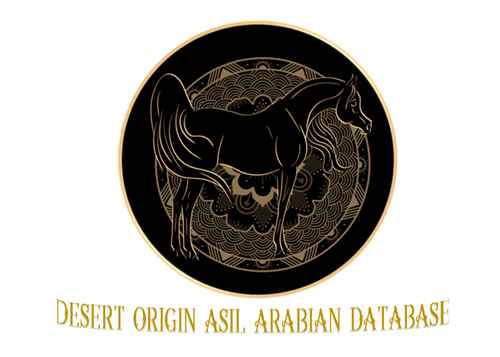Author: Serag
Comment:
Saqlawi Jidran was imported in 1817 to Weil Stud, Germany, by Baron Fechtig as an agent who served at Weil from 1817-1838.
Author: Serag
Comment:
The Bairactar OA sire line is the oldest active sire line in the world. It came to Europe when Bairactar OA 1813 was imported to Weil in 1817, where he served until his death in 1838. The legend says that he is the most beautiful stallion ever to leave the Arabian Peninsula. He was desertbred of a Saklawi line and he became the foundation sire of Weil. The royal stud of Weil was founded by Wilhelm I, the king of Würtemberg. Besides Bairactar OA, many valuable horses were imported from the desert to Weil. Some of them left lines that exist today, for example, the mare family of Murana I, the oldest mare line in the world. He was 157 cm high and with large eyes, dryness, and refinement he was a very good-looking horse, albeit with a rather straight profile. These traits can still be seen in some of his modern descendants. Even though he was used heavily at Weil this sireline remained scarce as a paternal line, although he left numerous broodmares. This tendency is often seen in the stallions of this line, the great sires leaving a large number of mares and only one or two sons to continue the line. Bairactar OA sired a few sons used at stud, but only one, Amurath 1829 out of Sady III, continued the line. The full brother of Amurath 1829, Selim, was also used and left some mares. Longevity is another trait of this line, Bairactar OA was put down when he was 26 years old and his descendant Amurath 1881 "Weil" was put down at 30. The skeleton of Bairactar OA is exhibited at the Institute for Animal Breeding in Stud Museum Offenhausen Stuttgart-Hohenheim. Germany. A molar tooth from this skeleton was used for DNA analysis... To avoid contamination, DNA extraction was performed in the clean room of the Central Research Laboratories at the Natural History Museum in Vienna.
Back
Comment:
Saqlawi Jidran was imported in 1817 to Weil Stud, Germany, by Baron Fechtig as an agent who served at Weil from 1817-1838.
Author: Serag
Comment:
The Bairactar OA sire line is the oldest active sire line in the world. It came to Europe when Bairactar OA 1813 was imported to Weil in 1817, where he served until his death in 1838. The legend says that he is the most beautiful stallion ever to leave the Arabian Peninsula. He was desertbred of a Saklawi line and he became the foundation sire of Weil. The royal stud of Weil was founded by Wilhelm I, the king of Würtemberg. Besides Bairactar OA, many valuable horses were imported from the desert to Weil. Some of them left lines that exist today, for example, the mare family of Murana I, the oldest mare line in the world. He was 157 cm high and with large eyes, dryness, and refinement he was a very good-looking horse, albeit with a rather straight profile. These traits can still be seen in some of his modern descendants. Even though he was used heavily at Weil this sireline remained scarce as a paternal line, although he left numerous broodmares. This tendency is often seen in the stallions of this line, the great sires leaving a large number of mares and only one or two sons to continue the line. Bairactar OA sired a few sons used at stud, but only one, Amurath 1829 out of Sady III, continued the line. The full brother of Amurath 1829, Selim, was also used and left some mares. Longevity is another trait of this line, Bairactar OA was put down when he was 26 years old and his descendant Amurath 1881 "Weil" was put down at 30. The skeleton of Bairactar OA is exhibited at the Institute for Animal Breeding in Stud Museum Offenhausen Stuttgart-Hohenheim. Germany. A molar tooth from this skeleton was used for DNA analysis... To avoid contamination, DNA extraction was performed in the clean room of the Central Research Laboratories at the Natural History Museum in Vienna.
Back
